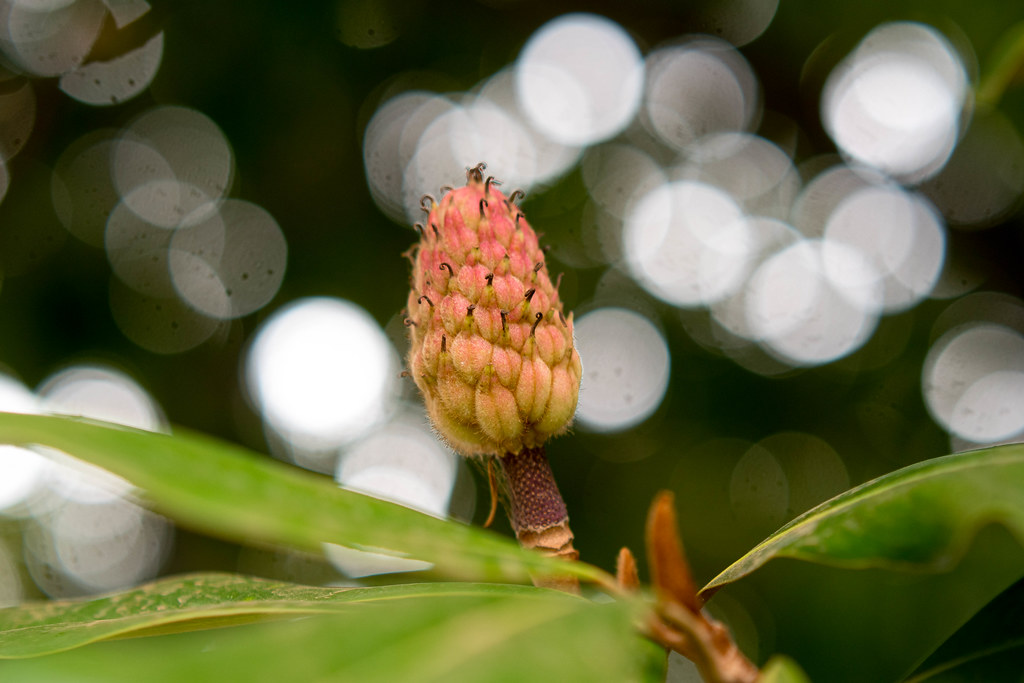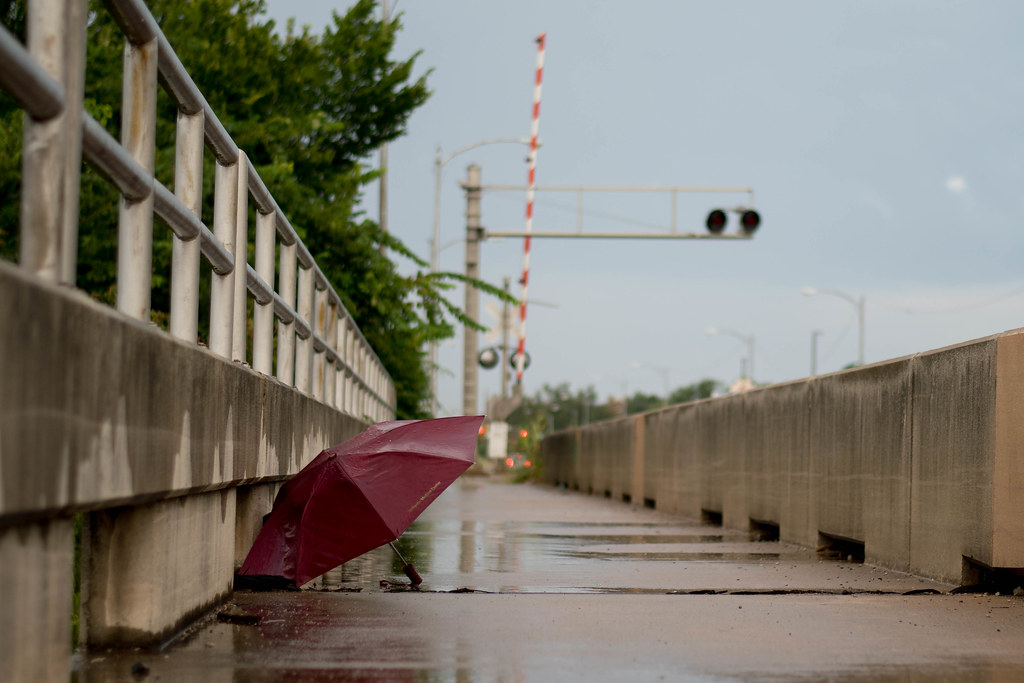
This picture looks a lot like the one I shared two weeks ago, but there’s some interesting differences too and a few things that, in my mind, elevate it above the other one. First of all, it doesn’t exactly follow the same compositional rules in that the subject it not illuminated against a bright spot of light in the background. There are lots of bright spots of course, but it’s not a dark background with one giant blob of light in the middle to accentuate the subject. Instead, in this picture, there’s a couple distinct elements that all come together to make the complete composition:
- Foreground elements such as the green leaves
- The subject itself, with a reddish hue to offer contrast with the green leaves
- White spots in the background, which accentuate the subject
- The very dark background
These four things work in unison and help create a picture that is much more interesting and compelling than if any of them were not present. Also, I shot this photo with a +2 close-up filter so I could get just a little close to the seed pod and make the background spots of light much larger too. Finally, you might notice dark spots on most of the circles of light which almost look like sun spots for any astronomers out there. In fact those are just bits of dust and debris on the front of my lens, and a reminder that I really need to clean that thing every once in a while :)


